#Image descriptions
Explore tagged Tumblr posts
Text

[ID: Illustration of Arthur Morgan from Red Dead Redemption 2 and his horse backlit by warm yellow light. Arthur has a small grin and is petting the horse on their nose and mane. His hat shades his face and he is wearing his blue shirt with suspenders and his belt with his gun is slung on his hips. The background is a rectangle with a painted dawn sky and trees. END ID]
having a lot of fun just being a cowboy in this game
#red dead redemption 2#rdr2 fanart#arthur morgan#rdr2#fanart#my art#artwork#image descriptions#image described
520 notes
·
View notes
Text
People in this demographic, please let me know how to tag to get a hold of you as someone who doesn't need Image Descriptions!!
12K notes
·
View notes
Text
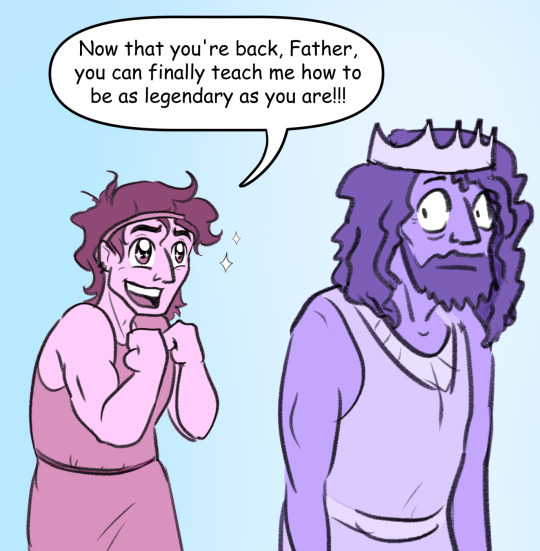
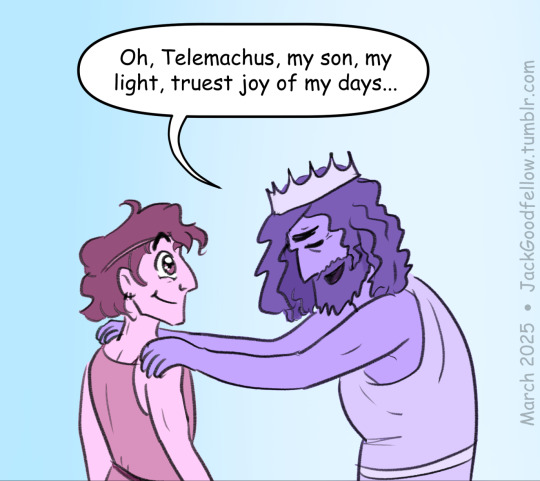
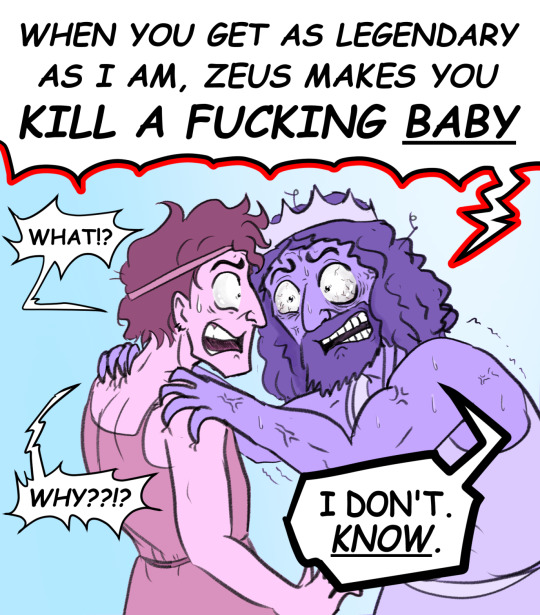
#epic#epic the musical#epic the vengeance saga#epic the ithaca saga#telemachus#epic telemachus#odysseus#epic odysseus#my art#alt-text#image description#ody epic#telemachus epic the musical#fanart#fan art#image descriptions#id in alt text
63 notes
·
View notes
Text
People who don't have the energy to ID every image you reblog, but make sure to describe all your original posts, we're lining up so I can give all of you a big high-five. People who don't know how to describe every image you reblog, but describe lots and lots of specific types of posts like screenshotted tweets or animal images, I am sending you all some little treats.
People who check the notes for IDs, I notice you and I appreciate you so much. People who edit the ID into your posts when someone in the notes provides one, I see you, and you're a constant encouragement to me. We will all do what we can to make a more accessible world together.
#and if you're reading this post thinking: “i can't describe every image i reblog... but i can do some of this”#then try it! don't let perfect be the enemy of good! your efforts won't be incomplete or wasted! i believe in you!#image descriptions#accessibility
1K notes
·
View notes
Text
People on the internet: they can't hire actors who are actually in wheelchairs to play wheelchair users in movies! What if there's a scene where they need to stand up? A wheelchair user can't do that!
Robert Rodriguez: hold my beer
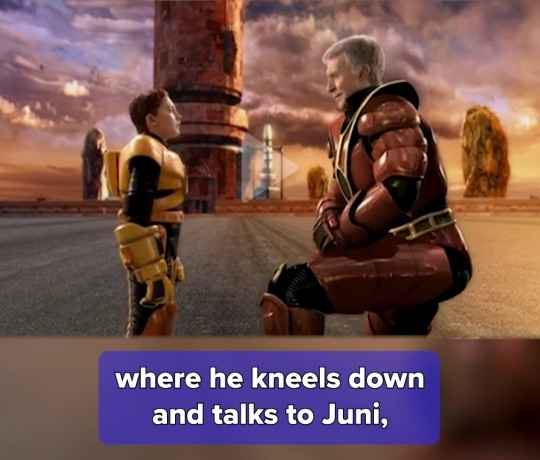
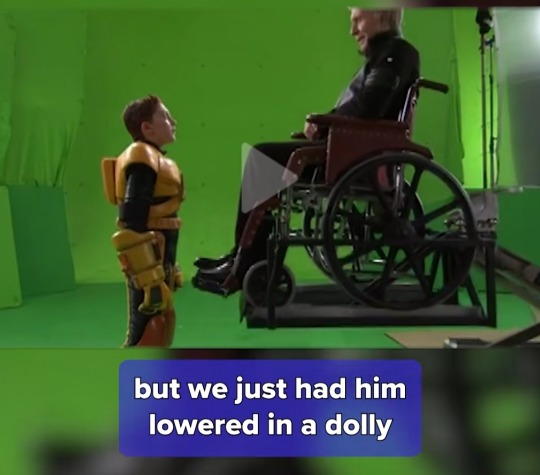
This is a scene from spy kids 3 - a movie in a series famous for its shoe-string budgets, where Ricardo Montalbán's character is in a wheelchair, but spends most of his screen time in a digital reality where he doesn't need it. Ricardo Montalbán was actually in a wheelchair though in real life, so they just used a combination of VFX and camera tricks (and a dolly for a few shots) to film those scenes. Also if I remember correctly the movie ends with him back in the real world, fighting a mech with his jet-pack wheelchair lmao.
The disability rep is dated (as is the VFX lol) and does fall into a lot of tropes I personally dont like, but it's so earnest in their attempts, and the visible effort behind the scenes to include a real, disabled actor outweighs it for me - even as a kid who wasnt fully aware of why.
Bigger studios have no excuse.
I've linked the video I got these screenshots from, they talk a lot about how they handled Ricardo Montalbán's character being out of his wheelchair there. If if you like behind the scenes stuff for campy old movies, I highly recommend it!
[ID 1: a screenshot of the movie Spy kids 3D, showing Juni, the main character in a suit of yellow power armour, talking to his grandfather, who towers over him in red power armour. his grandfather is kneeling so he can be at eye level with him.
the caption underneath reads "where he kneels down and talks to Juni" /end ID 1]
[ID 2: a photo of the same shot but without the effects. Grandpa is shown to be in a wheelchair, and is being held at the needed height by a moveable platform his wheelchair is sitting on. Juni is wearing the armour, grandpa is not, and there are green screens behind them.
the caption underneath reads "but we just had him lowered in a dolly" /end ID 2]
#disability#physical disability#disability representation#disability in media#spy kids 3#wheelchair user#wheelchair#representation matters#disability in movies#vfx#image descriptions#also ambulatory wheelchair users exsist so the point these people try to make about them not being able to do some scenes still doesn't work
2K notes
·
View notes
Text
We ask your questions anonymously so you don’t have to! Submissions are open on the 1st and 15th of the month.
#polls#incognito polls#anonymous#tumblr polls#tumblr users#questions#polls about the internet#submitted mar 15#image descriptions#accessibility#tumblr culture#tumblr#images
297 notes
·
View notes
Text
This post is made with speech to text because my hand hurts from typing so much today. Please forgive any typos or speech to text swapping similar sounding words.
If you would like to start writing your own image descriptions, feel free to ask any questions.
The main things to keep in mind is that they should begin with some variation of image description start or ID, and end with some variation of image description and, and ID or something like that. This distinguish the image description from the caption or anything else.
Image descriptions should not be written in italics, bold, all caps, or any colors. If text in the image is in all caps, write it in regular case, and simply note before or after it that it's in all caps.
Image descriptions should describe all images in the post, without skipping any. This includes images that are nothing but text.
Plain text image descriptions in the body of the post are more accessible than alt text alone, because many people who need image descriptions cannot use alt text, and Tumblr is known for its glitches, so the accessibility of the alt text all by itself varies widely over time.
It is more accessible to have the image descriptions indented than not, because this helps to visually separate the image description from the caption. Having brackets or parentheses at the end is also helpful for this. This allows people to easily distinguish between the caption and the image description if they need to.
If you are an artist, writing image descriptions for your art will give you full control over the image description, and will allow you to correctly identify details that others might miss. This gives you the opportunity to show which parts of your art hold meaning to you and are important to notice.
If you are describing real people who are unknown to you, unless it is specified within the post or you are already aware, please do not assign any gendered terms to them, or any " male presenting or female presenting" terms like that. This is completely unnecessary and leads to misgendering. It is best to simply describe visible facts about the people. Hair color, length, clothes and style, pose, expression, the light or darkness of their skin, things like that. Do not assume that someone is white simply because they have light skin.
Do not use image descriptions to lie to the audience in any way and do not use image descriptions to make jokes where the audience reading the image description is the butt of the joke.
As an example, if there is a very clearly fake screenshot, do not say that it is simply a screenshot, or if a photo is very blatantly photoshopped, do not say that it is simply a photo. Say an edited photo, a badly edited photo, a screenshot with editing, something like that to indicate the changes have been made and then what you are going to be describing is not the natural version.
As an example, you would say a crab photoshopped to be driving a car. Rather than a photo of a crab driving a car.
Unless you are transcribing a text within the image, do not use meme speak within image descriptions. Do not refer to dogs as doggos for example, unless it is to specify that the dog in the image is, within the image, labeled as a doggo. Do not describe someone walking downstairs as breasted bubbly downstairs, even if it is an actor humorously walking down the stairs to imitate that sentence. Describe the facts of the movements, and then you can make the comparison for clarity.
If someone adds an image description to your post whether this be an original post or a reblog that you have added an image to, it doesn't matter how many notes to post already has, please copy and paste that image description into the original post or your original reblog. If it is a new post that has only a few notes from friends, after you update the original, you can just ask your friends to delete the reblogs of the inaccessible version and reblog the new one. Most people who are good people and care about disabled people will happily do so.
Keep in mind that image descriptions are accessibility tools. Treat them as such.
Anyone can write image descriptions. You do not need any special qualifications or training. As long as you are willing to take constructive criticism if you make a mistake, an image description written by someone who's new to it and honestly doing their best with good intentions is better than no image description at all.
I'm sure I'm forgetting some things, so please feel free to add on more tips and advice.
#made with speech to text#image descriptions#accessability#disabled#cripplepunk#neuropunk#autistic#adhd#if you care about disabled people#start writing image descriptions#especially if you're able-bodied
1K notes
·
View notes
Text
How to Write an Image Description: A Fundamental Guide.
[Plain Text: How to Write an Image Description: A Fundamental Guide. End PT]
General Guidelines:
[PT: General Guidelines. End PT]
Object, Action, Context
[PT: Object, action, context. End PT]
This is what you want to prioritize. What are we looking at, what is going on, and what is the surrounding environment?
Keep it simple and get to the point
[PT: Keep it simple and get to the point.]
Try to use short, clear sentences and prioritize what the reader needs to know in the context of the post. We don't need to know that the tweet was posted at 2:08AM or what color rings someone is wearing. That doesn't really provide useful information. If you really want to provide some relevant details, be sure you get to the main point of the image first.
Context is Important
[PT: Context is Important. End PT]
Why is the image posted there? What information does it lend to the content around it? Make sure the viewer knows what they need to know to understand how the image relates to the text and content partnered with it.
For a meme or a tweet screenshot, we don't need to know all the details or what the background looks like, we just need to understand the joke. For something like art or photography, you may want to include more details.
Don't Assume
[PT: Don't Assume. End PT]
Don't assume gender, race, and pronouns of the subject(s) of the image. If you can find this context in the post, on op's blog, or somewhere else you can include it, but try not to make baseless assumptions.
Alt Text vs Image Descriptions
[PT: Alt Text vs Image Descriptions. End PT]
Alt text is great for people using screen readers, but it isn't always the most accessible option. Alt text can be glitchy, the font size cannot be changed for those who need large text, and it doesn't show up at all until the image either loads or completely fails to load.
For this reason, a longer description in plain text in the body of the post is a more accessible option.
I suggest a short summary in the alt text so people can get the overview of an image and a longer description in the body of the post. For example, compare the image description and the alt text for the following image:

[Image ID: A guide to writing alt text on images. At the top, it says "Writing Alt Text" in big white text. It then lists off five major steps to writing alt text. Identify who, expression, description, color, and interesting features. It then shows an image of a capybara, with a sample alt text that reads, "A capybara looking relaxed in a hot spa. Yellow yuzu fruits are floating in the water, and one is balanced on top of the capybara's head." with each block of text color-coordinated to show which of the five steps it corresponds to. At the bottom of the image is the word "Puzzle" stylized into a logo. End ID.]
The Alt text provides the bare minimum of what you need to know to contextualize the image, while the ID expands on details that help to understand it and provides more details.
Formatting:
[PT: Formatting. End PT]
Try your best to use correct spelling and grammar, but transcribe accurately. Use clear language and concise sentences where possible. However: Don't censor words or correct spelling when transcribing something from the image. You want the description to be as accurate to the image as possible.
[PT: use correct spelling and grammar, but transcribe accurately. End PT]
Always use plain text. Never use formatting like bold, italics, other fonts/font sizes/text colors, or text in all caps. If they appear in the original image, transcribe it in plain text like this:
[Bold, underlined] Always use plain text. [End bold and underlines.]
Begin an ID with square brackets [[these]], followed by "ID:" or "Image:". End the description with "End ID" and a closed square bracket ] to signify the end of the descriptions.
Screenreaders and visually impaired people sometimes struggle with symbols and emojis. Transcribe these instead when possible!
[PT: Transcribe these instead when possible. End PT]
The image description should be directly after the image, before any post caption or commentary.
Never use a readmore! If you delete the post or change your url the description is gone forever. It also makes the ID harder to reach in general, which is not accessible.
[PT: Never use a readmore! End PT]
Make your post accessible from the start if you can. Don't post something without an ID then reblog it with a description so that people have a chance to spread the inaccessible version of the post if they "prefer" the one without the "clutter" of an ID. That's ableist. If you post something without a description then end up describing it later, edit the ID into the original post.
[PT: Make your post accessible from the start. End PT]
Resources:
[PT: Resources. End PT]
The People's Accessibility Discord Server: I will always suggest this server! It's full of people that can help write descriptions, give feedback on IDs you've written, answer questions about accessibility, and more!
Online OCR: Image(/PDF) to text converter! This is really helpful, especially for transcribing text in tweet screenshots, article excerpts, etc. You will still have to do a bit of work formatting and correcting things sometimes, but it's a really helpful tool
CaseConverter: Good for converting lots of text in all caps for plain text transcriptions.
Meme Image Descriptions: This google doc has descriptions of many common meme images and templates!
Some simple Image Description formats: tailored largely for replies and screenshots from social media.
WebAim: A whole website for web accessability!
Online Accessibility Masterpost focusing on image descriptions from tumblr user @anistarrose. This has a ton of good resources, reading, and tips!
Reading & Guidelines:
[PT: Reading & Guidelines. End PT]
Cooper Hewitt guidelines for image description: This focuses on describing art, but it's a fantastic resource. It gives a good description on the distinction between alt text and long descriptions and gives guidelines for each. It's a pretty concise and easily comprehensible read with a lot of good tips towards the end.
Medium's How to Write an Image Description: Concise and helpful. The origin of "object, action, context".
Diagram Center Guidelines for Image Description: I really suggest reading through this. It gives a much more comprehensive understanding of what is important when writing a description and has different sections for help describing all sorts of things like photos, art, comics, diagrams, charts, math, chemistry, and more! A longer read, but it has a lot of specifics.
Perkins School for the Blind how to write alt text and image descriptions: Another great resource! Concise and helpful, shorter than Diagram Center's articles.
SiteImprove's Alt Text Best Practices: Focuses on Alt text not long image descriptions
Last Call Media- Accessible Comics: Great info for describing comics!
American Anthropological Association's Guide for creating image descriptions: an additional resource on IDs just because
Some tips from Tumblr user @keplercryptids! I reiterated a lot of these points here, but it's still a very helpful post!
General guideline from @can-i-make-image-descriptions and @accessibleaesthetics
Alt Text and Image Description Guide by @brownandtrans
Huge list of blogs that post accessible content!
And another google doc of accessible blogs!
If this post was too much information to read and absorb all at once, I suggest reading the first two links as well as some of the last few links that lead to Tumblr posts.
[PT: If this post was too much information to read and absorb all at once, I suggest reading the first two links as well as some of the last few links that lead to Tumblr posts. End PT]
Those probably have the most concise and easily digestible information, so choose one of those. If I've said anything incorrect in this post, please let me know so I can correct it ASAP! Thanks so much for reading and happy describing!
#accessibility#accessibility tips#accessibility resources#id resources#image descriptions#resources#accessibility awareness#mod batz#i spent soooo long on this but it feels too long for anyone to pay attention to..... ah well......#disability pride month#online accessibility#long post#fuck i meant to queue this
673 notes
·
View notes
Note
When people put image IDs under the cut (Keep Reading) of a post on Tumblr, does a screenreader still detect it? Or does it skip it?
Hi! Thank you for the question.
So, in general, most of the time, a screen reader can find the “read more“ button/link and successfully activate it. And, the majority of the time, we can then subsequently read the rest of the post after activating the read more.
However, I want to put heavy emphasis when I say “most of the time.“ Tumblr is notoriously known for being barely usable with a screen reader at best and actively hostile to screen reader users at worst, and there are inconsistencies galore as well as frequent accessibility breaking updates. There are times when I have been able to access a read more one day, and then log on the very next day and find that I am totally unable to find it at all. There are other days where one post allows me to activate it just fine, but another gives me so much trouble that I give up And log off for the day completely in frustration.
For these reasons, as well as several others, it is almost always universally recommended to not put an image description under a read more. The image description should always be in the standard body of the post, and/or in the alt text.
The other big reason why it’s not great to put an image description under a read more is that if you delete your blog, that read more can no longer be activated, so that image description is gone forever even if others can still re-blog other versions of the post.
And, lastly, putting an image description under a read more simply just creates extra steps for disabled Tumblr users that non-disabled users don’t have to do to get access to the post and its content. We are often already doing so many extra steps just to use the website as a whole because of how inaccessible so much of it is, and putting more barriers in the way means that far fewer Blind people are likely to ever see that image description. Or if we do see that post and notice that you have put a description under a read more, we might already be out of spoons for the day and clicking that read more is just another tiring frustration. The description should be readily available And as easy to access as the original image is for fully sighted users if you want to create a truly equitable experience.
I hope this helps answer your question!
374 notes
·
View notes
Text
Image descriptions tips & tuts masterpost
[Plain text: Image descriptions tips & tuts masterpost /end PT.] (Tuts is my short for "tutorials" btw)
For when you want to make IDs but don't know how!
Formatting your image descriptions
Image descriptions tutorial
General guide
Describing memes
More detail isn't always better
More tips on describing images (including art)
Yet more little tips
Starting out with your image descriptions
The job of an image description + tips
How to *keep* doing IDs (from someone who does a fuckton)
Friendly reminder
Easy image descriptions to do for begginers
Why longer is oftentimes not better. At all.
(Edit: added by @anistarrose:)
How to get help writing IDs if you can't make them yourself
IDs for screenshoted tags
Visually impaired person talks about IDs versus ALT text
Extra tip: Tagging your posts as "described" or "undescribed" might help people who need the IDs to filter inacessible posts out if their dash.
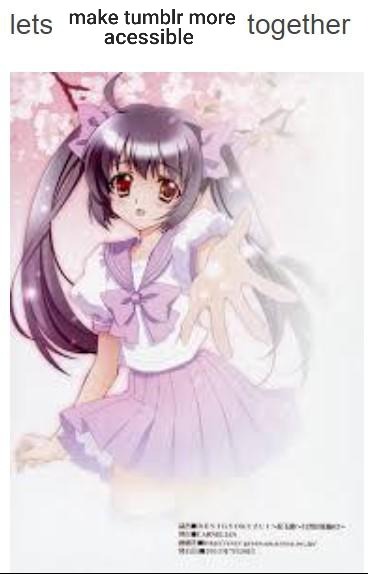
[Image description: The "let's take ibuprofen together" meme, edited to say "let's make tumblr more acessible together". /end ID.]
Note: If you have any good posts to add reblog them or send them to me and I'll add them to the original post 💪
#acessibility#image descriptions#masterpost#described#alt text#fun fact sometimes i put ids before the images too#because its cool#and sometimes it looks better#the first five posts are what i advise for starters#but all of them are good#tip 2: tagging keyboard smashes as “screenreader unfriendly” is also good for avoiding people's screenreaders from#crashing when they try to read it. i heard that they do that
654 notes
·
View notes
Text
And a very special fuck you to anyone who adds an undescribed image to a fully described chain
#little rambles#image descriptions#look. i get it. we“re all tired. we're all low spoons#but. i think. i deserve to be in on the joke or discourse too on my bad days#of which today is one#just a little squeak of frustration into the void#i'm. so tired.
91 notes
·
View notes
Text
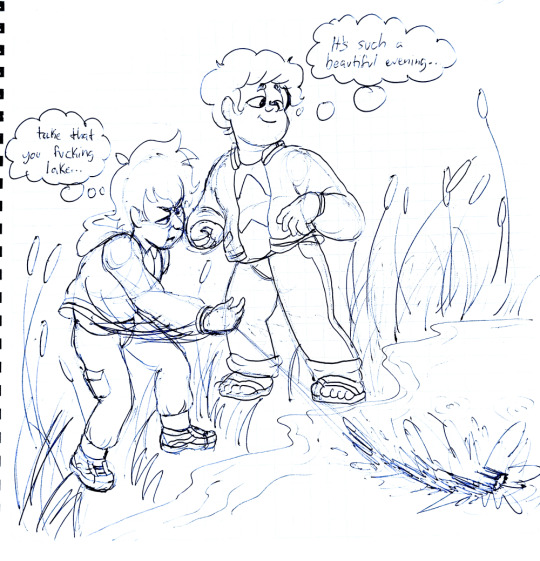

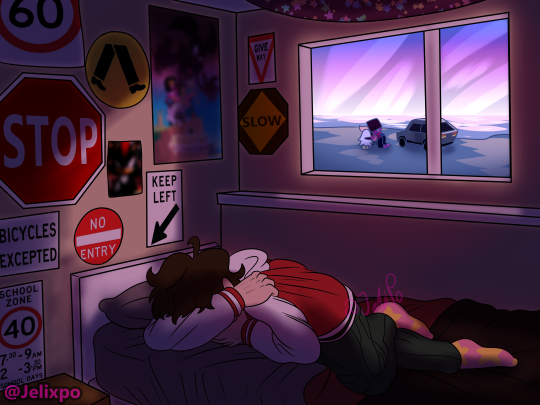

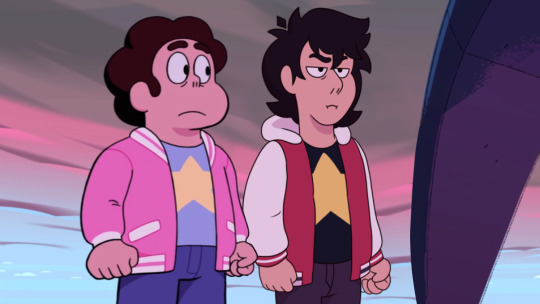
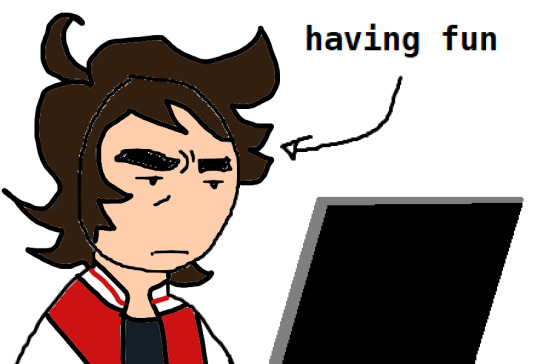
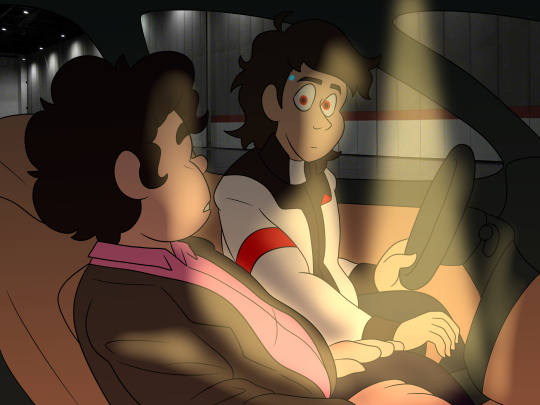
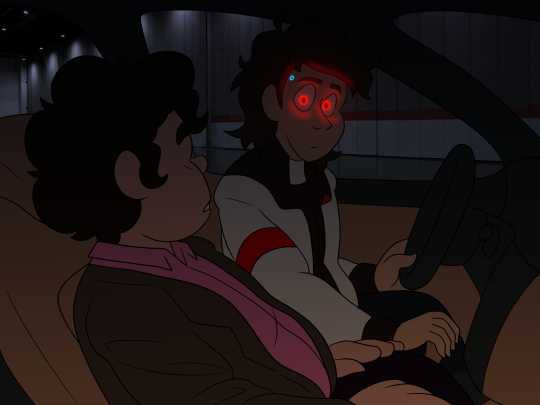
Some drawings of Steven with my friend @di4mndeyez 's oc Khai from their au
#art#slap some colour on paper#steven universe#steven universe future#khai#khai universe#shattered multiverse au#flashing lights#glitching#video#described#image descriptions
55 notes
·
View notes
Text
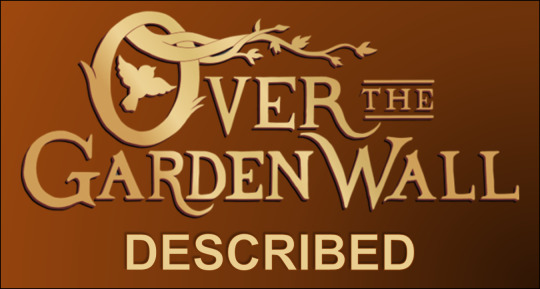
[ID from alt: banner reading: "Over the Garden Wall Described." End ID.]
Happy September, fellow denizens of the Unknown! This blog is dedicated to image descriptions for our beloved fall comfort series, to ensure maximal accessibility — especially for those who can't see and/or interpret images, whether fully or at all. Hence, we reblog IDs for screen reader compatibility, and we also tag for flashing/eyestrain.
If you'd like to see more accessible OTGW posts on your dashboard, give us a follow! And if you write image descriptions for OTGW posts yourself, please tag us. We'd love to add to our queue!
Lastly, with an emphasis on zero pressure whatsoever, reblogs are always helpful to get the word out. Together, we can make this the OTGW fandom's most accessible Halloween season yet!
54 notes
·
View notes
Text
I don't even use Bluesky very much, nor do I want to use Bluesky very much; it's got it's own problems — but if only more social media sites would just adopt their strategy of "remind people to include alt text, with a message that also explains who alt text is for."
The reason this has been on my mind? I've seen some artists who consistently include alt text on Bluesky, and consistently don't include alt text or image descriptions when posting the same art to Tumblr. That's clear evidence that Tumblr, and other websites that squirrel away their "add alt text" button where no one sees it, could be doing more for accessibility with just a few simple changes — which would make a meaningful difference for screen reader users.
And to be clear, Tumblr would also have a lot of work to do to make their alt text less glitchy in general — which is one of many reasons you might still see people writing IDs in-post, or even putting them both places. But I can't stress enough that a lot of progress will quickly result from just teaching people, on a wide scale, that:
Blind and low-vision people do in fact use social media, and
There's a thing you* can and should do to accommodate those blind and low-vision people.
(*If you're experiencing a barrier to writing IDs, like a lack of mental energy, not knowing how to describe something, or needing IDs yourself, then that's nothing to be ashamed of. However, in that case, it's good to familiarize yourself with methods of crowdsourcing IDs.)
411 notes
·
View notes
Text
How to Support People With Faceblindness/Prosopagnosia Online
This isn't super important. I'm pretty sure I'm not the only faceblind person whose response to not recognizing people was to stop caring about celebrities (and most live action). Unless it's an important political post, we're unlikely to NEED to recognize a random image on Tumblr. But if it you have the energy, this really helps:
Caption photos with the names of whoever is in them. Even if it's someone like Elvis Presley or Donald Trump, who EVERYONE recognizes.
I can't consistently recognize Marilyn Monroe. And I don't want reassurance that she looks just like someone else, so you understand. There will be someone you don't understand, and I still won't be able to recognize them. I'm bad at faces.¹
-
I notice that reaction images are especially hard for me. People LOVE seeing how much context they can remove while still leaving a reaction image recognizable. I have to guess that the zoomed-in eyes are probably still the Obama reaction image from years back. They're just eyes to me. Even normal reaction images are hard if they don't have distinct enough poses.
If you can mention the person's name in the alt text or a caption below your reaction image, it would help a lot.
-
This doesn't apply to people whose names aren't well known. If their identity isn't adding to the meaning, I don't care who it is.
For example:
With the 'then perish' Obama meme, part of the humour is that the then-president is the one telling us to die. So mentioning that it's him aids my understanding of the meme.
With 'Dead Dove: Do Not Eat', mentioning that the actor is Michael Bluth, or that the scene is from Arrested Development, allows me to go find out the context if I want to know more. (Which might have stopped me from distributing misinformation to thousands of people about the meaning of the phrase!)
As far as I can tell, the fact that the 'snakes started manifesting' guy is named Uhrie Anthony is NOT particularly important to the meme. I don't need to recognize him from somewhere else to understand what's going on.
-
I don't struggle nearly as much with cartoon characters. Just live-action/real people. Not sure if there are faceblind people that will struggle that way. It's still nice to get context for where some anime character is from, but it doesn't affect me the same way as seeing a random blond woman on my dash, and trying to figure out if she's a singer, an actor, an activist, or something else completely.
-
¹ I'm not annoyed, just trying to support those who struggle with reading comprehension. This isn't about the individual people I'm mentioning. It's about my ability to recognize ANYONE.
57 notes
·
View notes
Text
I've seen some posts (rightfully) complaining about how a lot of the people who write image descriptions are disabled themselves so I wanted to get some data.
#image description#described#image descriptions#accessibility#video description#gif description#image#video#gif#poll#polls
187 notes
·
View notes